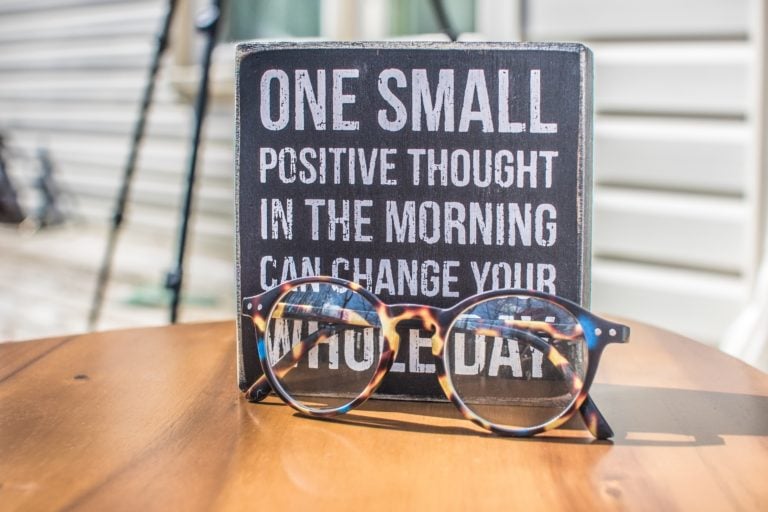Bare Minimum Monday is trending as the latest way to improve employee well-being and productivity. This article explains what it is, how it works, and why it’s not effective for all companies.
Key Takeaways
- Most workers experience the “Monday blues”—a feeling of dread surrounding the work that needs to be done in the week ahead.
- “Bare Minimum Monday” is trending among workers as a way to start their week in a positive, relaxed way. It’s a way to prevent the “Monday blues” or the “Sunday scaries.”
- Employees who practice it begin their day with self-care rituals, often starting work later than usual. Plus, they complete only essential tasks on Monday, leaving the rest for later.
- While Bare Minimum Monday may have some benefits, it can hurt your bottom line. It also doesn’t work for everyone, so you need to consider its pros and cons before implementing it.
- I recommend adopting sustainable alternatives to promote long-term employee wellness and productivity. These include flexible working and extra time off.
Introduction
The American Psychological Association recently found that work-related stress is at an all-time high. As a result of this, nearly 3 in 5 workers experience low motivation, energy, and productivity at work. Over 30% even report emotional exhaustion and physical fatigue as part of the burnout.
Studies have also shown that Monday is the most stressful day of the week and accounts for 20% of all sick days.
“Bare Minimum Monday” is the latest trend to fight the “Monday blues” and recharge for the week. Employees who follow this start Mondays with self-care and work on only their most important tasks. This is meant to promote a positive start to the week and prevent work-related anxiety.
While this approach has some benefits, it doesn’t work for everyone. Employees who need to perform consistently and adhere to strict deadlines at work can’t use this strategy effectively.
In this article, I explain what Bare Minimum Monday is and summarize its pros and cons. I also provide alternative solutions you can use to boost productivity and enhance work-life balance in your business.
What is Bare Minimum Monday?
In a recent poll, 58% of workers claimed that Monday was their least favorite day of the week. This is in line with a phenomenon called the “Monday blues”—the negative emotions people feel when going back to work on Monday. Sometimes, the feeling is so overwhelming that workers feel anxious as early as Sunday. This phenomenon is known as the “Sunday scaries.”
Bare Minimum Monday is the latest self-care strategy to combat the stress and anxiety workers feel at the start of the working week.
It usually involves starting the day with self-care activities such as meditating, working out, or spending time with family. Employees who use this approach also focus only on the “bare minimum”—i.e., critical tasks—on Mondays. This could mean leaving the other tasks for later or delegating them to someone else.
Also, some workers don’t check emails or attend meetings on Monday mornings. This reduces distractions and helps to clear their head before the week begins.
Michael Maximoff, Managing Partner at Belkins, explains that the idea is to “take the first day easy, plan things out, and prepare everyone to hyperfocus for the rest of the week.”
“If approached correctly, it even makes sense from a productivity perspective as work is always easier after proper rest and planning periods,” he adds.
Where did it originate from?
The Monday blues may have existed long before being labeled. However, the next generation is unlikely to accept the phenomenon as part of their work culture. A Gallup report shows that Millennials and Gen Z workers place a high value on their mental health and well-being.
The COVID-19 pandemic has also played a role in changing employee priorities. During COVID-19 lockdowns, many people were working from home, furloughed, not working, and so on. Thus, they had more time for personal commitments. For example, they could spend time with loved ones, take up new hobbies, or focus on their mental and physical health.
It’s not easy for workers to go back to work as normal after experiencing this kind of balance. In fact, a Microsoft report showed that 53% of employees prioritize their health and well-being more now than before the pandemic.
With an increased focus on mental health and work-life balance, workers have taken matters into their own hands.
Bare Minimum Monday has been popularized through a combination of social media and word of mouth. It started with individuals like Marisa Jo Mayes, a TikToker, claiming that it’s been a great way to reduce work pressure and boost productivity.
Since its inception, it’s been trending across social media platforms. TikTok, Twitter, Instagram, and Linkedin users are sharing how the experience has worked for them. The hashtags #BareMinimumMonday and #BareMinimumMondays have had over 3 million total views in the last 7 days.
What benefits can it offer?
Randi Levin, a life coach, has shared that Bare Minimum Monday can “allow a more gracious and graceful start to the work week.” As the concept has gained traction, some employers are embracing it as a new company benefit.
The jury’s still out on its long-term impact, but expected benefits include:
Increased productivity and effectiveness
When workers prioritize only critical work on Mondays, they can focus on completing these tasks effectively. Avoiding distractions like meetings may result in higher-quality work with fewer mistakes.
Reduced burnout and absenteeism
By starting their week with self-care rituals, workers can take a step back from their stress and get into a positive mindset.
Additionally, by pushing non-essential tasks to later, employees can feel less overwhelmed and are less likely to call in sick. In this way, employers can create a more supportive and sustainable work environment.
Better attraction and retention of talent
In today’s competitive job market, employees look for companies that focus on improving work-life balance. Initiatives like Bare Minimum Monday help employers differentiate themselves as supportive and innovative. This can go a long way in attracting and retaining top talent.
Moreover, existing employees who value the perk feel cared for and are less likely to leave.
What’s the catch?
While Bare Minimum Monday can promote productivity and well-being, there are some downsides to consider.
It may backfire, decreasing productivity
While Bare Minimum Mondays can prevent overworking, some employees may use it as an excuse to slack off or skip completing their tasks. This can decrease overall productivity and hamper company revenue.
Also, by compromising an entire workday, workers may rush to complete tasks, leading to poor quality work or missed deadlines. This can damage your reputation with customers and cost you money.
Patrick Smith, CEO of Ourpcb, has expressed concern about “the impact this trend could have on productivity and overall company culture.”
“It is important for employees to feel supported and empowered to take care of themselves,” Smith says, “but it is also important for them to meet the expectations and responsibilities of their role.”
It may be a temporary solution to a deeper issue
Percy Grundwald, co-founder of Compare Banks, believes that this approach “suggests a lack of motivation and engagement with work, which could stem from various factors, including burnout, a toxic work environment, or a lack of clear goals or direction.”
These are all deeper management and culture issues that need to be resolved. Bare Minimum Monday may fix the problem temporarily but ultimately create a ripple effect where workers are overworked during the rest of the week.
Delaying tasks on Mondays will eventually increase the pressure felt on Tuesdays. This can lead to a never-ending cycle of Bare Minimum Tuesdays, Wednesdays, Thursdays, and so on. Thus, it isn’t a sustainable long-term solution.
It can create a negative work environment
Due to the nature of their work, employees who may not be able to participate in Bare Minimum Mondays might end up with an uneven workload. For example, a nurse who’s already working under high pressure may have to pick up tasks of a colleague who’s doing only the bare minimum on Mondays. This could lead to feelings of resentment.
Grundwald also suggests that a lack of accountability in the organization can “lead to a culture of blame-shifting and finger-pointing, which can be toxic and detrimental to the overall success of the organization.”
It may not work for everyone
Bare Minimum Mondays won’t work for industries that need a more consistent level of productivity throughout the week. For instance, it’s not feasible for workers in restaurants, retail shops, or schools to perform only essential tasks on Monday. They need to spread their work evenly throughout their workweeks.
Similarly, workers from industries like construction have strict deadlines for specific days. They won’t be able to have a slow start to the week without the added pressure of adhering to due dates.
Sustainable Alternatives to Bare Minimum Monday
Bare Minimum Monday isn’t a long-term solution for employee well-being and doesn’t work for most frontline or in-field industries.
Below, I’ve provided some sustainable alternatives for Bare Minimum Monday. You can use these to promote better mental health and boost productivity in your company.
Provide breaks, time off, and mental health days to recharge
Provide employees with generous paid time off (PTO). Encourage them to use their full allowance so they can rest and destress from work. Also, provide regular meal and rest breaks throughout the day so employees can recharge frequently.
By scheduling time off and breaks in advance, you can prevent employee burnout while ensuring that you’re never understaffed.
Additionally, a recent study found that 82% of Gen Z workers want mental health days. Similar to providing sick leave, offering workers a certain number of mental health days off can be beneficial. Workers will be at ease knowing that they can use these days when they need to switch off. Plus, initiatives like this are a great way to attract and retain top talent.
Implementing this strategy will leave you with a happy, healthy, and productive workforce.
Offer flexible working
Jonathan Westover from Human Capital Innovations believes that Bare Minimum Monday reflects a “growing dissatisfaction with the traditional work culture and a desire for more work-life balance among workers, especially Gen Z and Millennials.”
Flexible working is an effective way to foster a culture of work-life harmony while staying productive. Flexibility doesn’t always mean working from home. You could allow workers to pick job sites that are closer to them. You can also offer flexibility in shift schedules, or give them time off in lieu when they’ve worked beyond their contracted hours. These are effective ways of offering flexibility to employees who need to be physically present at work.
With better control of their time, workers are likely to be more energetic, high-performing, and loyal to your company.
Help workers prioritize and structure their tasks
Employees don’t need to focus solely on critical tasks on Mondays. Instead, have them create a structured to-do list that’s easier to manage throughout the week.
You can also help workers prioritize their work and manage their time better. Do this by providing clear deadlines and setting realistic expectations about how long tasks might take.
Additionally, help them break down large, complex tasks into smaller action items. These are usually easier to manage and less overwhelming.
My advice: Feature-rich apps like Connecteam let you easily create and assign tasks and sub-tasks. You can also attach files and notes to tasks, giving employees all the support they need to do their best work. Plus, you can track progress to ensure that your workers are completing their work on time. Sign up for a free 14-day trial to check it out.
Summary
Mental health and well-being have become leading priorities for today’s workforce. Workers are now using Bare Minimum Monday as the latest trend to combat their Monday blues—the feeling of stress and dread at the start of a new work week.
With this trend, employees work only on business-critical tasks on Monday, leaving their remaining work for later. Additionally, they spend Monday mornings indulging in self-care rituals, often starting work late. The idea is for employees to start the week on a slow, positive note so they can avoid burnout and increase their overall productivity.
While this strategy can help some, many experts believe this is a temporary fix. Moreover, it isn’t a viable solution for many frontline industries that require consistent work every day of the week.
In this article, I’ve provided some sustainable alternatives to Bare Minimum Mondays. By adopting these, you can make deeper management and culture changes in your company. You’ll find that employees are happy, energetic, and engaged throughout the week.




